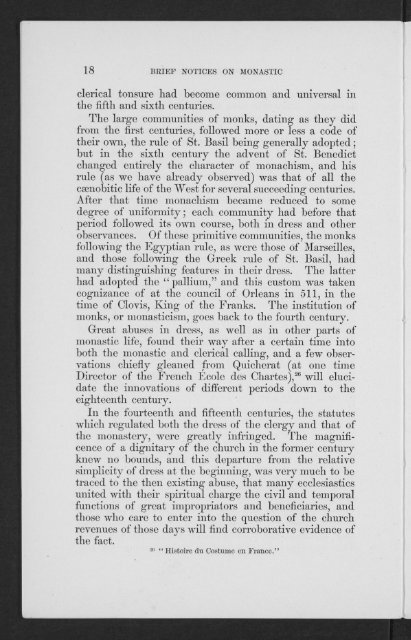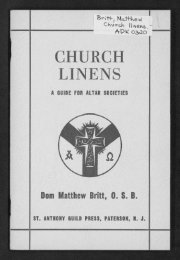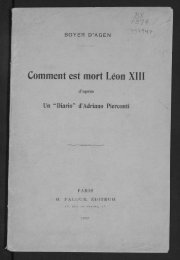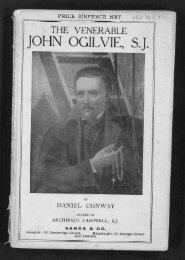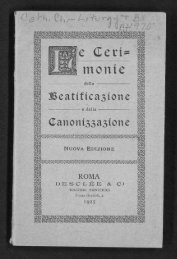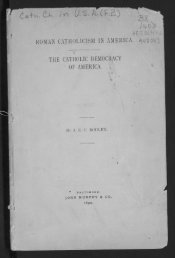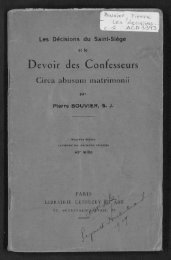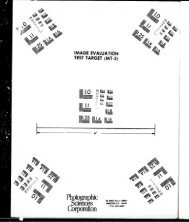MONASTIC AND ECCLESIASTICAL. COSTUME.
MONASTIC AND ECCLESIASTICAL. COSTUME.
MONASTIC AND ECCLESIASTICAL. COSTUME.
You also want an ePaper? Increase the reach of your titles
YUMPU automatically turns print PDFs into web optimized ePapers that Google loves.
18 BBIEF NOTICES ON <strong>MONASTIC</strong><br />
clerical tonsure had become common and universal in<br />
the fifth and sixth centuries.<br />
The large communities of monks, dating as they did<br />
from the first centuries, followed more or less a code of<br />
their own, the rule of St. Basil being generally adopted;<br />
but in the sixth century the advent of St. Benedict<br />
changed entirely the character of monachism, and his<br />
rule (as we have already observed) was that of all the<br />
caenobitic life of the West for several succeeding centuries.<br />
After that time monachism became reduced to some<br />
degree of uniformity; each community had before that<br />
period followed its own course, both in dress and other<br />
observances. Of these primitive communities, the monks<br />
following the Egyptian rule, as were those of Marseilles,<br />
and those following the Greek rule of St. Basil, had<br />
many distinguishing features in their dress. The latter<br />
had adopted the " pallium," and this custom was taken<br />
cognizance of at the council of Orleans in 511, in the<br />
time of Clovis, King of the Franks. The institution of<br />
monks, or monasticism, goes back to the fourth century.<br />
Great abuses in dress, as well as in other parts of<br />
monastic life, found their way after a certain time into<br />
both the monastic and clerical calling, and a few observations<br />
chiefly gleaned from Quicherat (at one time<br />
Director of the French Ecole des Chartes), 26 will elucidate<br />
the innovations of different periods down to the<br />
eighteenth century.<br />
In the fourteenth and fifteenth centuries, the statutes<br />
which regulated both the dress of the clergy and that of<br />
the monastery, were greatly infringed. The magnificence<br />
of a dignitary of the church in the former century<br />
knew no bounds, and this departure from the relative<br />
simplicity of dress at the beginning, was very much to be<br />
traced to the then existing abuse, that many ecclesiastics<br />
united with their spiritual charge the civil and temporal<br />
functions of great impropriators and beneficiaries, and<br />
those who care to enter into the question of the church<br />
revenues of those days will find corroborative evidence of<br />
the fact.<br />
26 " Histoire du Costume en France."


